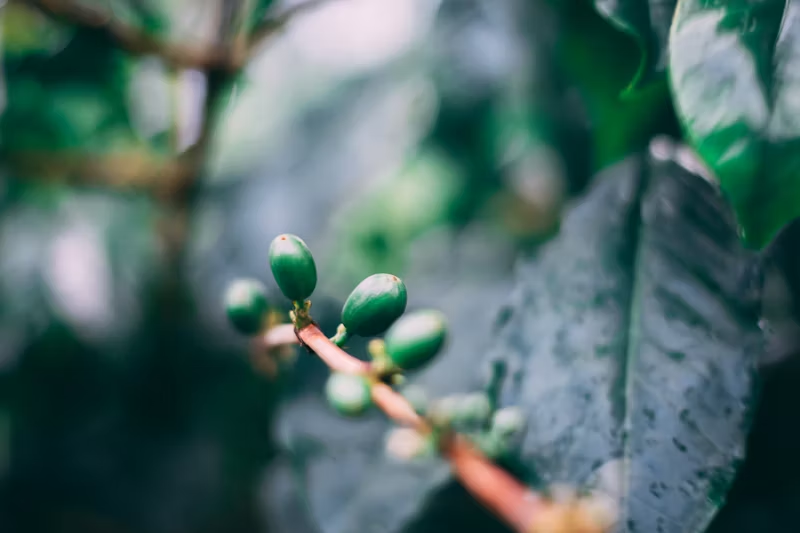Exploring Coffee Processing Methods
- Michael Fung
- Jul 23, 2024
- 3 min read
Updated: Jul 26, 2024
Introduction ☕️
Different coffee processing methods bring out unique flavors and characteristics in the beans. These methods, developed and perfected over centuries, significantly impact the taste, aroma, and overall quality of the coffee. Let's delve into the main methods: washed, natural, honey, and wet-hulled, exploring their processes and effects on the final product.
Washed Process (Wet Process) 💧
The washed process, also known as the wet process, is one of the most common methods used globally, especially in Latin America and Africa. This method emphasizes the coffee bean's inherent qualities by removing much of the fruit before drying.
Method: The washed process begins by pulping the coffee cherries to remove the outer skin. The beans, still covered in a sticky mucilage, are then fermented in water for 12-48 hours. During fermentation, naturally occurring enzymes break down the mucilage. Once fermentation is complete, the beans are washed with clean water to remove any remaining mucilage and then spread out to dry, typically in the sun on raised beds or patios, or using mechanical dryers.
Flavor: Coffees processed using the washed method tend to have a clean, bright, and consistent flavor profile. This process highlights the acidity and intricate flavors inherent to the bean, resulting in a crisp and well-defined cup.
Regions: This method is prevalent in regions like Colombia, Ethiopia, and Central America, where the necessary infrastructure and water resources are available.
Natural Process (Dry Process) 🌞
The natural process, also known as the dry process, is one of the oldest coffee processing methods. This method relies heavily on natural environmental conditions and requires minimal water usage.
Method: In the natural process, the entire coffee cherry is left intact and spread out to dry in the sun. The cherries are regularly turned to ensure even drying and to prevent mold or fermentation. This drying process can take several weeks, depending on the climate and weather conditions. Once the cherries are fully dried, the outer fruit layer is removed, usually by hulling machines, to reveal the coffee beans inside.
Flavor: Coffees processed using the natural method often exhibit fruity, sweet, and complex flavors. The extended contact between the fruit and the bean imparts distinct berry or wine-like notes, resulting in a rich and full-bodied cup.
Regions: This method is commonly used in Ethiopia and Brazil, where the dry climate provides ideal conditions for natural processing.
Honey Process 🍯
The honey process is a hybrid method that combines elements of both the washed and natural processes. It aims to balance the clean characteristics of washed coffee with the sweetness and body of natural coffee.
Method: After pulping the cherries to remove the skin, the beans are dried with varying amounts of mucilage still attached. The amount of mucilage left on the beans determines the type of honey process: white⚪️, yellow,🟡 red,🔴 or black,⚫️ with black honey having the most mucilage and white honey the least. The beans are then dried on raised beds or patios, turned regularly to ensure even drying and to prevent over-fermentation.
Flavor: Honey-processed coffees offer a balanced flavor profile, combining the bright acidity of washed coffee with the fruity sweetness of natural coffee. The more mucilage left on the bean, the sweeter and more complex the resulting flavor.
Regions: This method is particularly popular in Costa Rica and other parts of Central America, where producers experiment with various levels of mucilage to create unique flavor profiles.
Wet-Hulled Process (Giling Basah) 🌧️
The wet-hulled process, known locally as Giling Basah, is unique to Indonesia and contributes to the distinctive flavor profile of Indonesian coffees.
Method: In the wet-hulled process, the cherries are pulped to remove the skin and then fermented for a short period to break down the mucilage. The beans are partially dried to a moisture content of around 30-40%, and the parchment layer is removed before the beans are fully dried. This semi-dry process exposes the beans to more environmental elements, which can influence the final flavor.
Flavor: Wet-hulled coffees are known for their earthy, rich, and full-bodied flavors. They often exhibit notes of spice, herbs, and dark chocolate, with a heavier body and lower acidity compared to other processing methods.
Regions: This method is predominantly used in Indonesia, particularly in Sumatra and Sulawesi, where the humid climate necessitates a unique approach to drying and processing.
Conclusion 🌟
Each coffee processing method adds its unique touch to the final coffee flavor. The washed process emphasizes the bean's inherent qualities with a clean and bright profile. The natural process imparts fruity and complex notes, while the honey process balances both, offering sweetness and body. The wet-hulled process, unique to Indonesia, results in rich, earthy flavors. Exploring these methods helps you appreciate the diverse tastes and aromas in your cup, providing insight into the intricate journey from cherry to coffee bean.






Comments